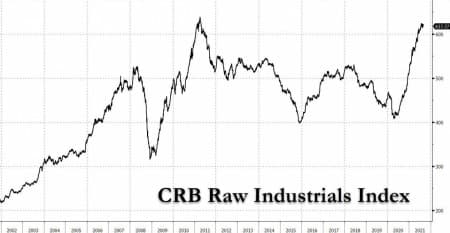2021 has been a harder year for many investors than the headline indices imply. It’s been a year where ‘ESG’ and ‘Quant’ remain key structural trends in the investment community. And it’s been a year that has seen an almost constant, running debate over the outlook for growth and inflation. Commodities, it just so happens, find themselves at the center of all these stories.
Let’s start with the challenging year. The casual observer could be forgiven for thinking that 2021 has been a walk in the park, with global equities returning 16% through September 1, with historically low volatility.
But under the surface, it’s been hard. It’s been hard in a ‘good’ market like US equities, where major rotations have led to sharp swings in relative performance (US small caps rose +20% through mid-March, and are lower since). And it’s been hard in global equities, where MSCI China has fallen 26% since February 14, while MSCI Europe is up 14% over the same period. Many active managers are lagging behind their benchmarks.
Yet quantitatively, it may be an even harder year in rates and FX. We run a Cross-Asset Systematic Trading tool, or CAST, which aims to identify what factors matter for cross-asset performance, and systematically invest based on how those factors look at a given moment. CAST asks “if I do what has historically worked in the market, given current information, what should I do?”.
Year-to-date, following these historical patterns has led to poorer outcomes in interest rates and FX compared with all other asset classes. Where have historical patterns done better? Commodities. A lot better.
Investing systematically based on attractive factors (carry, momentum, valuation, supportive fundamentals) has been working better in commodities than any other asset class (credit is second). Why? We have a few theories:
- Natural inefficiencies in the commodity market create a risk premium.
- The tendency of commodities to move in longer cycles means that momentum is more effective.
- Central banks aren’t intervening in these markets (and investor flows have been more muted), allowing more ‘normal’ dynamics to play out.
Given the prominence of quant and systematic investing as themes in investment management, this is pretty important.
Commodities also tie into a second big investment theme, ESG. The underlying reality and seriousness of climate change remains constant, and indeed, looks even more pressing following the release from the Intergovernmental Panel on Climate Change (IPCC). Yet while ESG-linked equities have seen pronounced swings in 2021, commodity markets have delivered a far more consistent message.
The price for EU Carbon emissions, for example (MO1 Comdty), has risen 88% year-to-date. My colleague Robert Pulleyn has been bullish on the belief that a higher price on emissions is essential to meet the EU’s climate goals. Near term, he sees the risk of a decline given recent gains, before prices resume their upward trend toward €102/ton by 2027 (see Utilities: Carbon: Softness Risk Ahead? Before Upwards March Resumes, August 9, 2021).
Wait, you might say. If commodity markets are so focused on the realities of climate change, why are oil prices higher this year, not lower? Again, we think the market is actually pretty rational. Shareholder pressure and the threat of future EV adoption is causing oil producers to dramatically reduce their capex plans, a development that my colleague Martijn Rats believes will help limit supply and keep prices elevated (see Podcast | Thoughts on the Market: The Curious Case of Norway, EVs and Oil, September 2, 2021).
ESG and systematic investing are major industry themes. 2021 being harder than the headline indices suggest is something we’re all aware of. But the biggest story of the year is the debate around growth and inflation. What, it seems fair to say, do commodities have to say about that?
While commodity prices are often synonymous with inflation, our forecasts suggest they’ll now play a smaller role. The biggest downside risk to prices is likely to come from core goods (where demand has been well-above trend), while the biggest risk to the upside is likely to come from rental growth (which is a large share of the basket, and strong). Nonetheless, recent stabilization in commodity prices should reinforce the transitory nature of headline inflation, which our economists expect to moderate into mid-2022.
On the growth debate, however, commodities are front and center. Our economists see a 3Q slowdown in both the US and China (but not Europe, which is a story for another time). Copper prices and the CRB RIND index, two key harbingers of cyclical strength, remain high, consistent with a view that this economic weakness will be temporary.

We’ll be watching the resilience of these indicators as August data, reported in September, may look poor, and test the market's resolve.
By Andrew Sheets, Chief Cross-Asset Strategist for Morgan Stanley via Zerohedge.com


















